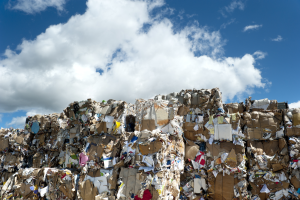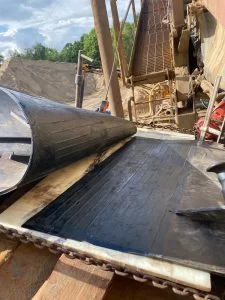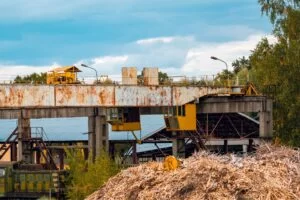London’s under-capacity sewerage system has taken a big step towards resolution with the news that the tunnelling work on the 25 km Thames Tideway Tunnel has been completed.
A special concert by London-based musician and composer Rob Lewis to celebrate the milestone echoed down the now fully excavated chasm beneath the metropolis, which stretches from Acton in the west to Stratford in the east.
Preparation work had begun in 2016 with the digging of shafts down to the tunnel levels and tunnelling itself then took place in three linked sections with the use of a series of powerful boring machines, beginning in 2018.
Commenting on the performance and the completion of the excavation work, chair of Tideway Sir Neville Simms said it “celebrates a significant milestone in our efforts to create a more sustainable London for our growing population and we are pleased to commemorate the end of tunnelling in such a unique way”.
The need for the new sewer is down to the recent surge in London’s population. The growth of the city from a million to over four million in the 19th century led to the Victorian network that has served the capital so well being established.
In the second half of the 20th century London’s population went into decline, but since the 1980s it has risen from around 6.7 million to nine million.
All this means more sewage is produced and the current sewers can be overwhelmed when it rains, leading to spillages into the Thames, threatening to reverse the progress made in cleaning up the river in recent years.
Of course, the work of building the sewer is not the whole story. There will be finishing work, testing and commissioning before the tunnel comes into use in 2025. But the sewage will still have to go somewhere and the final destination lined up is Beckton Sewage Works, which will be supplied by the Lee Tunnel from the Stratford end of the Thames Tunnel.
This is already the biggest sewage treatment works in Europe and it will have the specific job of dealing with the overflow that would otherwise end up in the river. That will mean more capacity may be needed there, both in 2025 and in the future as the population of London continues to rise to ten million and beyond – and with it the need for more equipment like belt cleaners.
Other facilities that will be working with the new super sewer will include various pumping stations. Some of these are already existing and operational, such as those at Abbey Mills, Hammersmith and Shad Thames, while new or expanded pumping stations will exist at Earl (near Greenwich), Greenwich itself, Falconbrook and Heathwell.
These sites may not gain quite as much attention – and certainly not any concerts – but they will be crucial parts in the new sewerage system for London and ensure a cleaner Thames in the future.
Only those who have the technical or engineering roles to operate such places will know the details of the equipment needed to keep things running, but millions of Londoners and countless more visitors to the capital will benefit from the cleaner environment that the new system will deliver.




